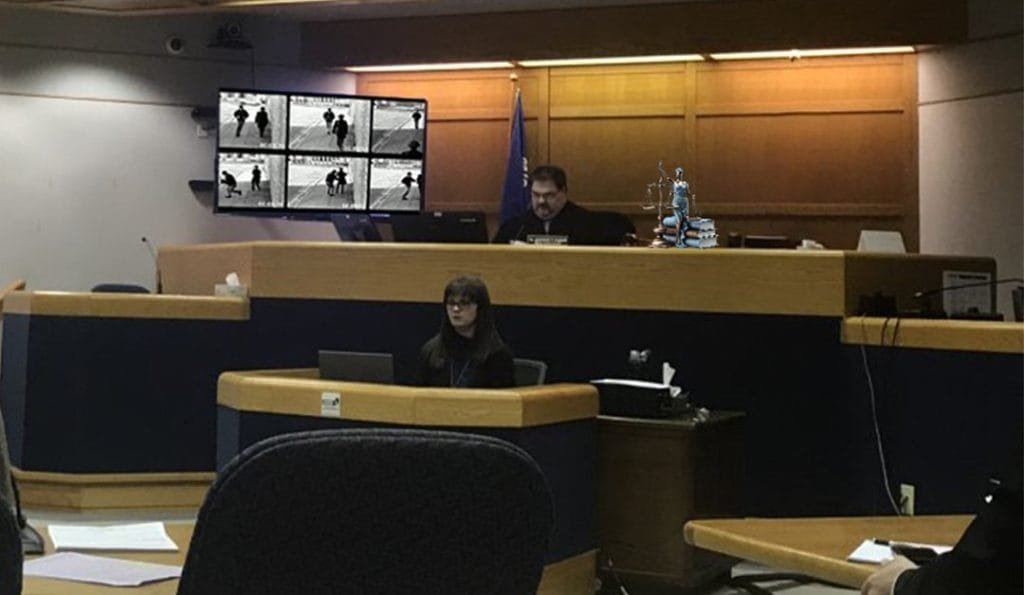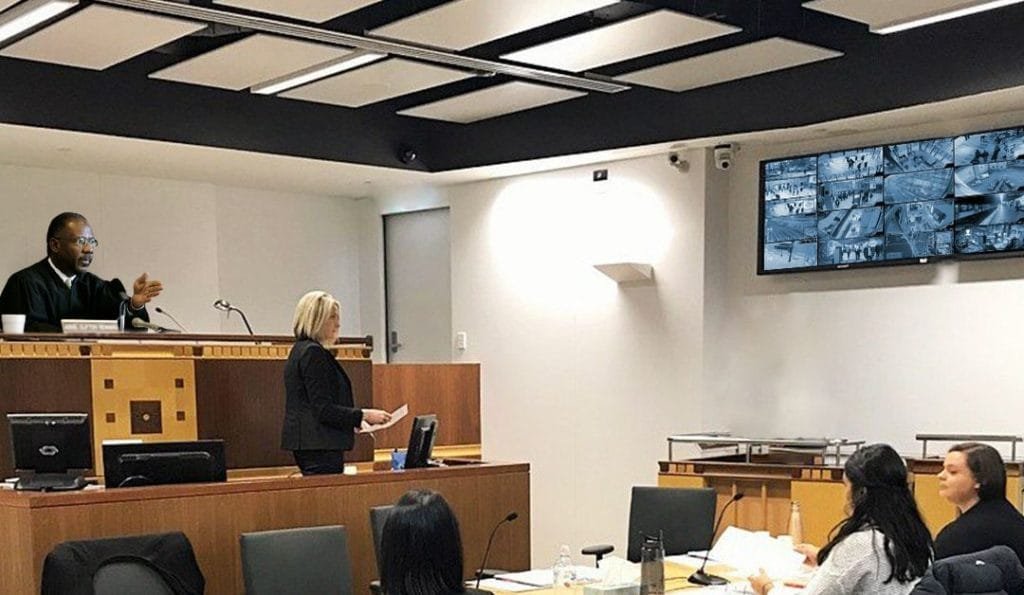In the legal world, video evidence has quickly become a major factor. Over the last few decades, the usefulness and importance of video evidence in court cases has risen steadily. This article will share the steps and measures to take when submitting video evidence in court.
All the steps are reviewed by actual lawyers to ensure the process is safe and legal to avoid any issues. We will also share some challenges you might face so that you are prepared for them.
Types of Video Evidence
Surveillance Footage
Surveillance cameras capture real-time events, offering an unbiased lens on incidents within their range. Courts often value this evidence for its objectivity and ability to provide a factual account.
Body-Worn Camera Recordings
Law enforcement increasingly utilizes body-worn cameras, offering a first-person perspective providing an unfiltered view of interactions. This form of evidence can significantly impact cases involving police conduct.
Smartphone Videos
With the prevalence of smartphones, individuals often become inadvertent documentarians. Understanding the admissibility of these videos requires careful consideration of factors such as authenticity and context.
Dashcam Footage
Commonly associated with vehicular incidents, dashcam footage can provide crucial evidence in accidents and traffic-related cases. Properly handling and presenting this evidence is essential for its acceptance in court.
Step 1: Matching Legal Standards for Admissibility
Chain of Custody – Keeping Things in Order
When we talk about the “chain of custody,” we basically say we need to keep a clear record of who had the video from the start to when it’s shown in court. This is super important so that the video we show in court is exactly the same as when it was recorded.
Authenticity – Making Sure It’s Real
Proving that a video is accurate means showing where it came from and that no one messed with it. Courts want to be sure the video has stayed the same in any way.
Relevance – Staying on Point
When we say a video is “relevant,” we mean it has something to do with the case. Legal teams must show that the video connects directly to what’s being discussed in court. We can’t just offer something for the sake of it; it has to matter to the case.
Hearsay Rules – Understanding the Talk
In the legal world, “hearsay” means talking about someone else’s words, especially if they’re not in person. When videos have people talking, we need to be careful. Knowing the exceptions and limits to this rule is crucial for ensuring the video is accepted in court.
Remember, it’s like telling a story: we need to keep it in order, make sure it’s real, stick to the main point, and be careful about repeating others say.
Step 2: Preparing Video Evidence
Metadata Preservation
Keeping track of important details like when and where a video was taken makes the video evidence more believable. This info can back up what’s happening in the video, making it more reliable.
Editing and Enhancements
Fixing up a video can make it easier to understand, but we can only change it slightly. If we do, people might question if it’s real. Lawyers must find a balance between clarifying things and keeping the video true to what happened.
Expert Witnesses
In complicated cases, it’s helpful to bring in experts. These are people who know a lot about certain things. Regarding videos, experts can explain the technical stuff to the court, making it easier for everyone to get what’s going on.
Step 3: Submission Protocols
What the Court Needs
When we want to show court videos, we must follow some rules. Each court might have its own special rules, and it’s super important to follow them. For example, they might want you to format the video file to a particular format. So when you submit the video evidence in court, your file must be formatted beforehand; otherwise, the court will not accept it. This ensures everything goes smoothly, and the court takes our videos as evidence.
How to Send Videos to the Court
When submitting video evidence in court, you need to know how to do it. This means knowing which forms to fill out and what to write on the form. Certain courts have their own process that’s different from others. The legal team you bring with you needs to know all these things and when they need to be done.
Playing by the Rules
Our videos must play by the rules of evidence. This means they must fit in with what the court says is okay. Legal professionals, the law experts, have to check our videos carefully to ensure they follow all the rules before showing them in court. It’s like making sure we play the game right so we can win!
Facing Challenges in Using Videos in Court

Admissibility Hurdles
There will be times in court cases when you need to provide the legitimacy of the video you use. Legal teams must have additional evidence and reasons prepared to defend the video’s legitimacy to the court.
Challenges with Expert Witnesses
It can get tricky when we bring in experts to talk about the videos. The other side might question whether these experts are qualified or what they say is essential. Getting our experts ready for tough questions is really important.
Arguments from the Other Side
The opposition will do and say many things about the video evidence you brought to the court. You and your legal team must be prepared to defend it. So, it would be best to determine their questions and arguments about the video evidence beforehand. The better your preparation is, the better you will do. It’s that simple.
Best Practices
Legal Consultation
Unless you are a lawyer yourself, going to court and defending yourself can be suicidal. That’s why you should always get a proper legal team such as Legal Advice BD. With adequate help, you can handle most kinds of legal issues.
Documentation
Making sure we have detailed records for videos is really important. It would be best to document everything – from where you got the video to how you stored it and even how you got it ready to show in court. Doing this is like building a solid base to show that the video is believable and can be trusted when we present it in front of a judge.
Chain of Custody Protocols
Making sure you follow strict rules about handling video evidence helps the court trust that what you’re showing is accurate and true.
Impact on Legal Landscape
Influencing Jury Decisions
Videos can be super convincing and really affect what the jury decides. They’re like a powerful tool that helps tell the story of a case.
Legal Implications for Individuals
Knowing the bigger legal effects of videos helps people handle legal stuff better and make intelligent decisions.
Further Reading: Child Custody After Divorce in Bangladesh
Conclusion
Recently, videos have become quite influential in court cases. Therefore, knowing the proper method of submitting video evidence in court can be very effective. With our help, you will be making your case even stronger.
Take precautions about the challenges we mentioned so that you have an easier time. Our best practices will also help you submit your video evidence.
FAQs
Q. Can any video footage be submitted as evidence in court?
Video evidence must meet legal standards for admissibility, including authenticity, relevance, and compliance with hearsay rules.
Q. How can I ensure the chain of custody for my video evidence?
Keeping a solid and unbroken record of how evidence is handled, stored, and shown in court is essential. It means ensuring we know exactly where the evidence is from when it’s collected until it’s shown in front of the judge.
Q. What role do expert witnesses play in presenting video evidence?
Expert witnesses can provide technical insights into video evidence, enhancing its credibility and aiding the court’s understanding.
Q. Are there specific filing procedures for submitting video evidence in court?
Courts may have specific requirements for filing video evidence. Legal teams should be familiar with these protocols to ensure smooth submission.
Q. How does video evidence impact jury decisions?
Video evidence can significantly influence jury decisions by providing a visual and often persuasive account of events, shaping perceptions in the courtroom.

